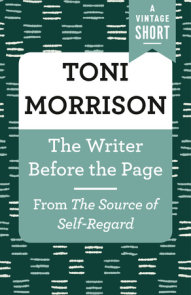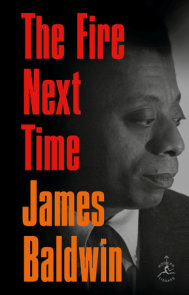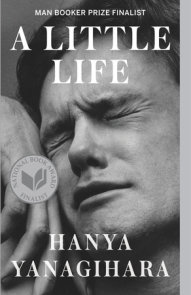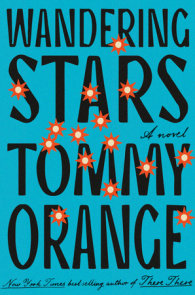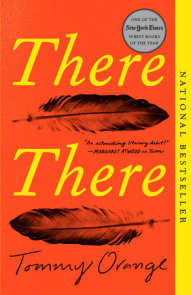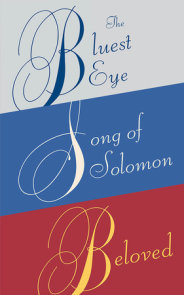READERS GUIDE
Reading Group GuideSula
A Novel
By Toni Morrison
Introduction
With humor, heart, and breathtaking beauty, Nobel Prize–winning author Toni Morrison’s second novel, Sula, chronicles the joys and the sorrows of four women as they navigate love and friendship in their small rural community. Leaning into life’s mysteries and pulsating with danger, this inventive novel captures the experiences of Black women in early-twentieth-century America and is just as resonant today as it was when it made its debut fifty years ago.
The Bottom was a small place. Tucked away in the hills of Medallion, Ohio, where the sound of spirituals rode on the cold winds of winter and men stretched out on dusty stoops in the summer, generations of Black Americans fleeing terror and violence found in this place a little glimpse of heaven. Here, two daughters were born to women who would never let them know the cruelties of the South. Here, two lonely girls found a friendship that was stronger than local bullies and a fearsome secret. And here, these two women will discover the bounds of their love for each other despite a betrayal that threatens to pull them apart forever.
Sula is the story of Nel Wright and Sula Peace’s decades-long friendship and the town that watched them grow from inseparable girls to women of opposite social standings. Full of tragedy, humor, and stunning prose, Sula paints a portrait of life for these two women that asks, What would it look like to be young, Black, a woman, and free?
The following questions are designed to spark thoughtful reflection and lively discussion for your reading of Toni Morrison’s Sula. We hope they enrich your experience of this beautiful novel by one of America’s most celebrated authors.
Questions and Topics for Discussion
Questions and Topics for Discussion
1. Sula is set in the Bottom, a small Black community in the fictional town of Medallion, Ohio. Where is the Bottom located in relation to the rest of the town? How was it founded, and where did it get its name? By the end of the novel, how have integration and technological advancements transformed the Bottom and the valley?
2. We are introduced to Shadrack as a shell-shocked veteran of World War I. Describe his journey from France to Medallion. Why does he institute National Suicide Day in the Bottom? Over the course of the novel, how do the townspeople’s and your own perceptions of his character change?
3. Nel and her mother are Creole. When does Nel first become aware that she and her mother are racially different from the townspeople? How does the treatment of Helene and Tar Baby, another light-skinned character, inform Nel’s actions and her interactions with the larger Black community?
4. Reflect on Nel’s upbringing. How does Helene’s troubled relationship with her mother, Rochelle, influence the way she raised her daughter, Nel? Why does Helene refuse to teach her Creole and make her pinch her nose? In adulthood, where do we see Nel perpetuating the standards of social behavior set by her mother?
5. Describe Number 7 Carpenter’s Road and the cast of characters who live there. How was it established, and who oversees it? By the end of the novel, who is left of the house’s inhabitants?
6. What is Hannah’s attitude toward sex, and how does it influence Sula’s own views on sex and relationships? While Hannah is still a valued and protected member of the community, why is Sula deemed a pariah by the people of the Bottom? Do you think it’s true that Sula is selfish, as people say? How do fear, jealousy, and contempt of Sula spread throughout the community, and what effect does it have on the lives of the townspeople?
7. The images of Plum and Hannah burning alive are horrific. How do the members of the Peace family come to understand these tragedies?
8. Where did the friendship between Nel and Sula first begin? What early experiences solidified their bond? After an inseparable childhood, when do their lives diverge and what becomes of the two friends during their time apart?
9. What does the New River Road project initially represent to the people of the Bottom? In the end, how is the project tied to the tragedy of National Suicide Day?
10. The novel’s dialogue is written in African American Vernacular English. What did this add to the story and your experience of reading it? Why do you think Morrison chose to tell the story in this way?
11. Sula provides thoughtful insights into the lives of women as they navigate friendship, love, sex, marriage, and motherhood. What roles do gender and race play in the opportunities afforded by the novel’s female characters regarding their relationships, independence, freedom, and security? Are there any expectations or limits placed on them as women in society? How do they deviate from or conform to these boundaries?
12. What was your reaction to Nel and Sula’s reunion and its aftermath? As a reader, did you find yourself taking sides with one character or another? Discuss your own experience of reuniting with someone from your past.
13. Sula is set in the early twentieth century. How does this time period affect the novel’s plot and central themes, including racial segregation, economic independence, and sexual freedom for women? What would be different if the novel were to be set in present times?
14. Throughout the novel, the shape of Sula’s birthmark changes based on who is looking at her. What does the birthmark represent to the novel’s characters, and how does it set her apart from the townspeople?
15. What truths are revealed to Nel in the novel’s closing chapter?
Suggested Reading
Cane by Jean ToomerHomegoing by Yaa Gyasi
Passing by Nella Larsen
Paradise by Toni Morrison
Recitatif by Toni Morrison
The Vanishing Half by Brit Bennett
The Mothers by Brit Bennett
The Grapes of Wrath by John Steinbeck
The Bluest Eye by Toni Morrison
The Color Purple by Alice Walker
The Wedding by Dorothy West
When We Were Birds by Ayanna Lloyd Banwo












